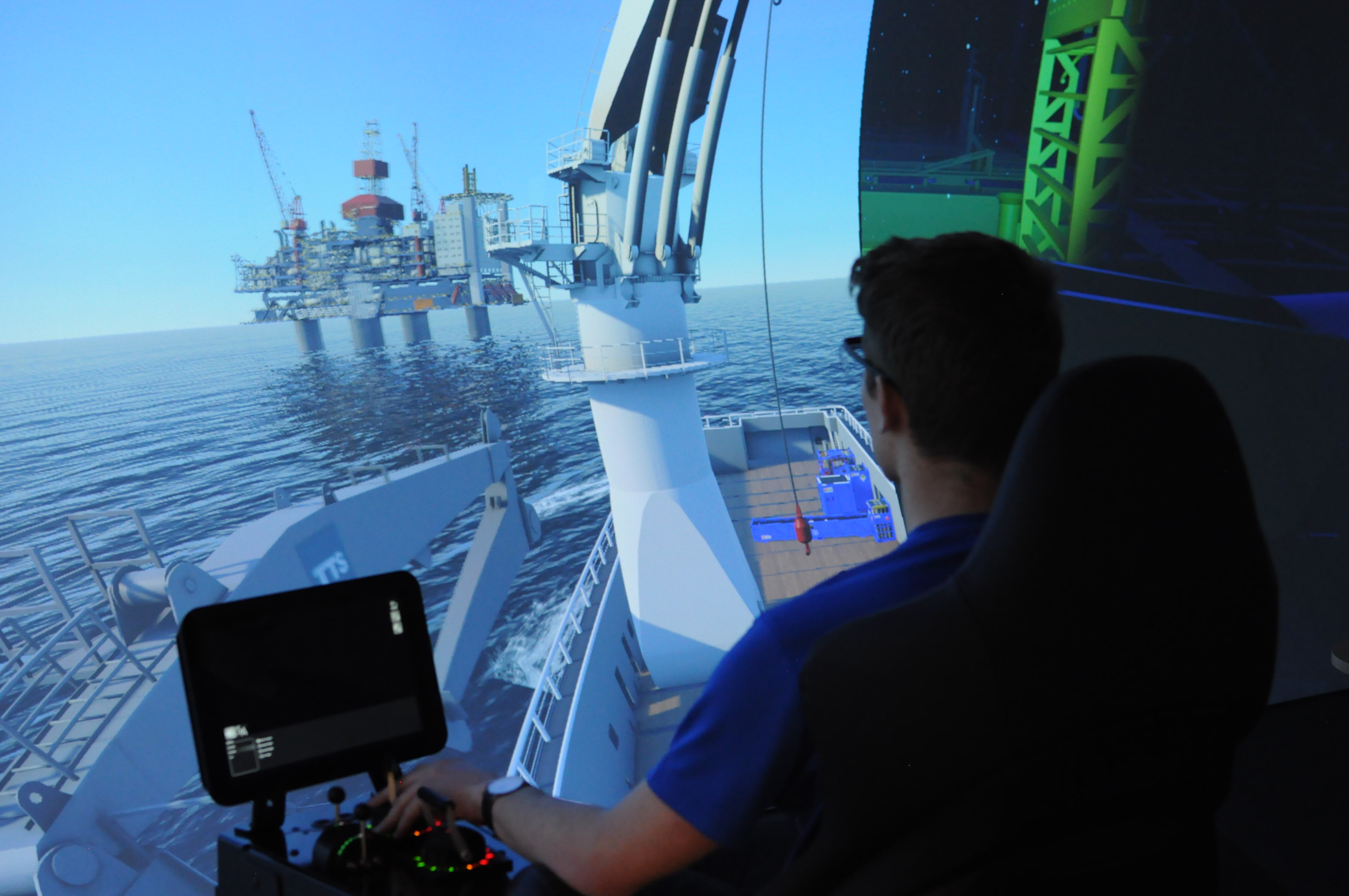Maritime simulators have moved beyond crew training and into the realm of prototype modelling and design appraisal.
Since their invention simulators have been a useful and engaging tool as part of the training of youngsters as they begin their seagoing career through shore based colleges. They still are, but are also evolving into integrated tools capable of talking to each other as bridge teams engage in coordinated exercises to improve their skills. One example of how this has developed is with one of the goals of the European funded Mona-Lisa and STM Validation projects, another is the CSmart complex run by the cruise ship operator Carnival in the Netherlands, where integrated training has reached a high level of sophistication.
Offshore has also taken up the simulator training, with crane operators, anchor and PSV operators all honing their skills without the fear that a wrong decision will lead to a mishap. That’s the benefit if simulators, one can make a cock-up without it being a real life threatening environmental incident.
But it is this ability to test ideas that is helping bring the simulator into its next role. Rolls Royce’s marine centre in Ålesund is about to strip out an old reception area and build a modern high tech simulator. Yes, it can help with crew training of Rolls-Royce systems and equipment on a ship. But is has another important function, the ability to visualise a design to see if there are any problems.
Rolls-Royce is no longer just an engine maker, nor is it totally focused on a future of autonomous or un-manned ships. The company also does ship design for today’s market and that still means meeting a shipowner’s preferences.
The new simulator will also be useful to show shipowners how their designs will look like long before the first sheet of metal is cut in a shipyard. It is the future of ship design the staff in Ålesund say.
The simulator will use the latest in virtual reality and will allow the company to show how things will look, especially as the technology for the ocean and maritime industries the company services is advancing so fast.
“We can bring owners into the simulator, show them the specifications they have for a new system or ship and then make changes,” says Asbjörn Skaro from Rolls-Royce.
The company is also part owner of OTC, another high tech simulator at Ålesund’s Maritime Competence Centre. It is one of four owners of the business, the others being Norwegian offshore service provider SolstadFarstad, NTNU (the Norwegian technical University) and Sintef Ocean.
OTC is a spin off from the university and addressed the need for anchor handling simulators about 12 years ago. Head of the centre is Joel Mills. Three years ago OTC was 95% about training and 5% about prototype testing, he says.Now it’s the other way round.
The OTC simulator is slightly different to all other simulators, and it is to do with the software the company has to run its simulations. Essentially the simulator can easily connect or integrate with other design systems. The implication of this is that modelling can be relatively easy so when underwater systems are developed, they can be tested as virtual prototypes, says Mills.
“The customer may have a number of solutions they want to try out, but they may be high risk solutions, so we test the possibilities and the customer can make a final decision after the VR trials.”
OTC has done work this way for Aker Solutions and Statoil on rig and subsea work. This includes looking at unmanned installations, new equipment as well as decommissioning of rigs. By testing out various configurations or ideas of how a rig can be safely decommissioned, the best option can be found.
This also leads to the notion of augmented simulation where experts can look at things they can not look at in real life. “We can look at operational parameters of ships and see what will happen two minutes into the future,” says Mills.
To make an easy to understand analogy, he likens it to using the reversing camera on a car where you can see the lines projecting where the car will be. This he says gives better operational awareness at sea and improved risk awareness. “There are a lot of new technologies emerging and the trick is to integrate them and make them work. Some people want to wait for the perfect solution, but having a solution is better than none.”
Mills also points out an obvious, but oft forgotten aspect of simulation, the ability to take complex, detailed data and visualise it into images that the human brain can very readily absorb and understand. By visualising it, he says, we make it real and can see the potential obstacles or flaws in an idea much more quickly.
Fathom-News.com































